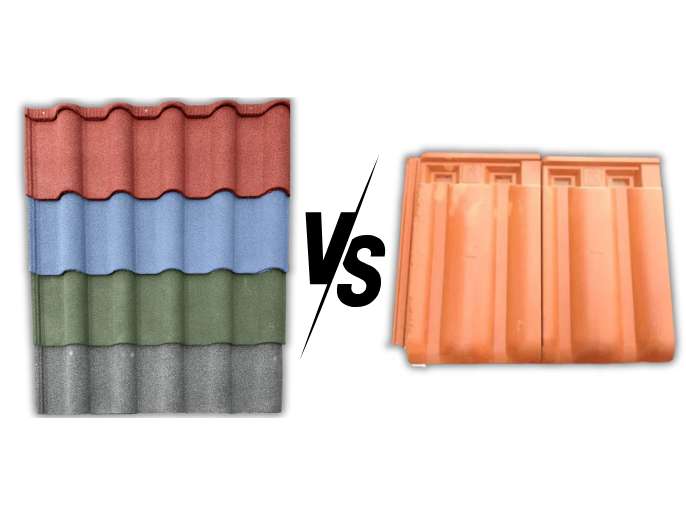
Stone Coated Roof Tiles vs. Clay Tiles
When selecting roofing materials, the choice between Stone Coated Roof Tiles and traditional Clay Tiles often comes down to factors like durability, aesthetic appeal, energy efficiency, and long-term value. While both have their merits, there are distinct advantages to choosing Colour Frog Stone Coated Roof Tiles.
The Clear Choice for Long-Term Benefits
While Clay Tiles may offer a classic aesthetic, Stone Coated Roof Tiles provide superior durability, energy efficiency, and low-maintenance advantages. Their long lifespan and ability to withstand harsh weather make them a smarter investment for homeowners looking for a roof that will last for decades.
Durability
1. Stone Coated Roof Tiles: Made from a steel core with a layer of natural stone, these tiles offer excellent durability. They can withstand extreme weather conditions, including heavy rain, strong winds, and hail, and their resistance to corrosion ensures a long lifespan.
2. Clay Tiles: Clay tiles are known for their durability, but they are more prone to cracking under extreme weather, especially in freeze-thaw cycles. They also lack the same resistance to impact and degradation that Stone Coated Roof Tiles offer.
Aesthetic Appeal
1. Stone Coated Roof Tiles: These tiles are designed to replicate the natural beauty of traditional materials such as slate or clay. With a variety of profiles and finishes, they provide a wide range of aesthetic options, from classic to modern designs.
2. Clay Tiles: Clay tiles have a distinctive, earthy look with their natural red or brown colours. They are often associated with Mediterranean or Spanish-style architecture but may not suit every building design due to their limited colour options and shapes.
Energy Efficiency
1. Stone Coated Roof Tiles: These tiles are energy-efficient, thanks to their reflective properties. They help reduce heat absorption, keeping the interior cooler during hot weather and reducing the need for air conditioning.
2. Clay Tiles: While Clay Tiles provide some insulation, they do not offer the same level of energy efficiency. They tend to absorb heat, which may increase cooling costs in warmer climates.
Safety
1. Stone Coated Roof Tiles: These tiles offer superior safety due to their structural integrity. The metal core provides added resistance against extreme weather conditions such as heavy winds and hail, minimizing the risk of roof damage. Stone Coated Roof Tiles are securely anchored, ensuring that they stay in place even in strong storms, reducing the risk of flying debris or tiles. Moreover, the durable nature of these tiles provides an added layer of security against theft. Since they are heavier and more securely attached to the roof, they are less likely to be stolen compared to lighter, easily removable materials.
2. Clay Tiles: Although Clay Tiles are durable, they are more vulnerable to cracking and dislodging under severe weather. In high winds, unanchored clay tiles can become loose, posing a safety risk in the form of falling debris. Additionally, Clay Tiles can be more prone to theft, as well as your valuables inside your house, as they are laid on top of each other without any fixing like screws because of its rigidity and easier to remove.
Maintenance
1. Stone Coated Roof Tiles: Stone Coated Roof Tiles require minimal maintenance. The stone coating prevents moss, algae, and lichen from growing, and the tiles are resistant to fading and weathering over time.
2. Clay Tiles: Clay tiles, while heavy, also require more maintenance. They are prone to moss and algae growth, especially in humid climates, and can crack or chip, requiring regular inspection and repairs.
